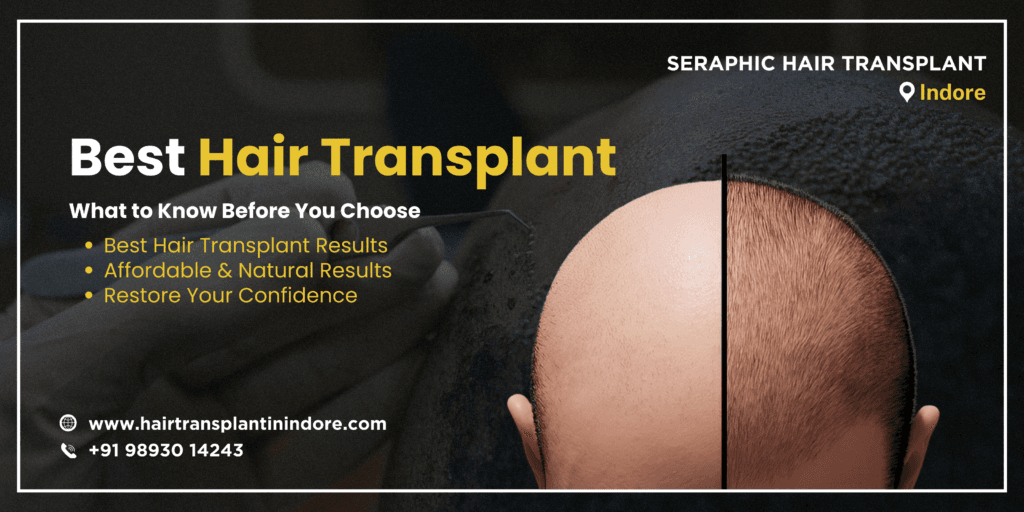Hair loss can be a distressing experience, affecting self-esteem and overall confidence. In recent years, hair transplants have emerged as a popular solution for those seeking a permanent fix to their hair loss issues. However, the question remains: Is a hair transplant truly a permanent solution? In this blog, we’ll explore the ins and outs of hair transplants, their effectiveness, and whether they offer a lasting remedy to hair loss.

Understanding Hair Loss and Hair Transplants
Hair Loss Overview
Hair loss, or alopecia, can be caused by a variety of factors, including genetics, hormonal changes, medical conditions, medications, and lifestyle. The most common form of hair loss is androgenetic alopecia, also known as male or female pattern baldness. This type of hair loss is hereditary and typically manifests as a gradual thinning of the hair on the scalp.
What is a Hair Transplant?
A hair transplant is a surgical procedure designed to address hair loss by relocating hair follicles from a donor area (usually the back or sides of the head) to the thinning or balding areas of the scalp. The goal is to create a fuller, natural-looking head of hair. There are two primary techniques used in hair transplants:
- Follicular Unit Extraction (FUE): In this method, individual hair follicles are extracted from the donor area and implanted into the recipient area. FUE is less invasive and leaves minimal scarring compared to the older method.
- Follicular Unit Transplantation (FUT): Also known as strip harvesting, this technique involves removing a strip of skin with hair follicles from the donor area and then dissecting it into individual follicular units for transplantation. FUT may result in a linear scar but allows for the extraction of a larger number of grafts in one session.
Evaluating the Permanence of Hair Transplants
The Science Behind Hair Transplants
Hair transplants rely on the concept of hair follicles’ resistance to DHT (dihydrotestosterone), a hormone responsible for hair loss in androgenetic alopecia. Hair follicles from the donor area are typically resistant to DHT and, when transplanted, continue to grow in their new location. This characteristic is what contributes to the long-term success of hair transplants.
Long-Term Results and Success Rates
Hair transplants have a high success rate, with many patients experiencing significant and lasting results. However, it’s essential to understand that while the transplanted hair follicles are generally permanent, several factors can influence the overall success and longevity of the results:
- Quality of Donor Hair: The health and density of the donor hair are crucial. If the donor hair is of poor quality or insufficient density, it may affect the final results.
- Surgeon’s Skill and Technique: The expertise of the surgeon plays a critical role in the outcome of a hair transplant. An experienced surgeon, like the best hair doctor in Indore, can ensure that the hair follicles are placed correctly and with precision, leading to more natural and lasting results.
- Post-Operative Care: Proper care after the procedure is essential for optimal results. Following the surgeon’s aftercare instructions helps minimize complications and promotes healing.
- Progression of Hair Loss: While the transplanted hair follicles are permanent, they do not prevent ongoing hair loss in non-transplanted areas. Patients may continue to experience hair thinning or loss in other areas of their scalp over time.
Continued Hair Loss in Non-Transplanted Areas
One of the significant considerations is that hair transplants do not stop the progression of hair loss in areas that were not treated. While the transplanted hair is permanent, patients may experience continued thinning or balding in the surrounding, untreated areas. To address this, many patients opt for ongoing treatments such as medications (e.g., finasteride or minoxidil) to slow down or prevent further hair loss.
Scarring and Healing
Although modern techniques like FUE reduce scarring, some level of scarring is inevitable. For FUT, a linear scar may be present, which could be noticeable if the hair is cut very short. It’s crucial to discuss scarring risks with your surgeon and manage expectations regarding the appearance of scars.
Cost and Maintenance
Hair transplants can be expensive, and the cost may vary depending on the extent of the procedure, the clinic’s location, and the surgeon’s expertise. At a renowned facility like the best hair transplant center in Indore, you can expect high-quality results. Additionally, while the results are generally permanent, patients may need to invest in ongoing treatments or follow-up procedures to maintain their hair and address any further hair loss.
Comparing Hair Transplants to Other Solutions
Medications
Medications such as finasteride and minoxidil are commonly used to treat hair loss. While they can be effective in slowing or halting hair loss, they do not offer the same permanent results as a hair transplant. Medications require ongoing use and may have side effects.
Non-Surgical Treatments
Non-surgical treatments like platelet-rich plasma (PRP) therapy and laser therapy can stimulate hair growth and improve hair density. However, they also require continuous sessions and maintenance, and results are generally not as permanent as those achieved with a hair transplant.
Lifestyle and Natural Remedies
Lifestyle changes and natural remedies, such as a healthy diet and stress management, can support overall hair health but are unlikely to address significant hair loss issues effectively. They may complement other treatments but are not a standalone permanent solution.
Conclusion
In summary, hair transplants offer a highly effective and generally permanent solution to hair loss by relocating hair follicles from a donor area to thinning or balding areas of the scalp. The transplanted hair follicles are typically resistant to DHT and continue to grow in their new location. However, it is essential to recognize that hair transplants do not prevent ongoing hair loss in untreated areas, and continued hair loss may still occur.
To achieve the best results, it’s crucial to choose a skilled and experienced surgeon, like Ankit Kasgiwala – best hair doctor in Indore, and a reputable facility such as the Seraphic hair transplant center. Following proper post-operative care and managing expectations regarding scarring and potential future hair loss is also important. For many individuals, hair transplants provide a long-lasting and satisfying solution to their hair loss concerns, but combining the procedure with other treatments or lifestyle changes may further enhance and maintain the overall outcome.
If you’re considering a hair transplant, consult with a qualified specialist to discuss your specific needs, assess your suitability for the procedure, and explore the best options for achieving and maintaining a full, healthy head of hair.Learn if hair transplants are a permanent solution to hair loss, covering effectiveness, cost, and painless options from the best clinic in Indore




